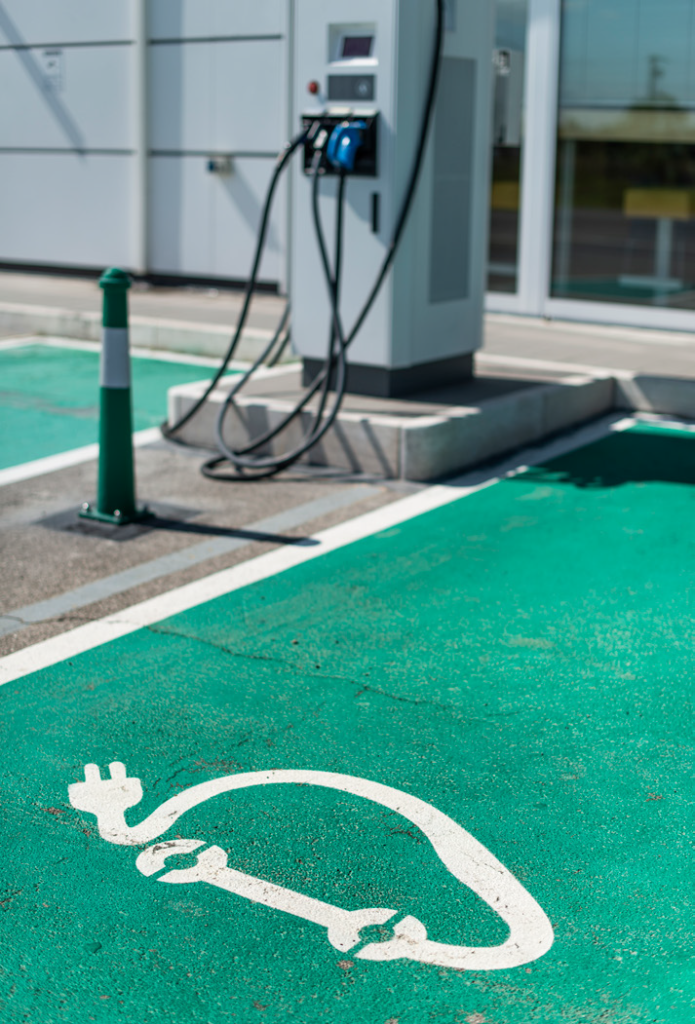Globally, passenger cars are projected to double by 2050. Most developing countries have no vehicle emissions standards and incentives in place to promote zero emission vehicles. The COVID-19 pandemic has contributed to a significant drop in oil prices and consequently, lower gasoline prices. Consumer purchasing power has been reduced during this period. The pandemic has prompted some new incentives and changes for emission regulations for several governments. Many governments have increased consumer incentives for electric vehicle purchases. According to McKinsey and Company the purchase price subsidy for electric vehicles in China currently ranges from approximately USD 2,350 to USD 3,365 per car whereas in Germany purchase price subsidies for new electric vehicles are amounting to more than USD 10,000 per vehicle. In April 2020 China committed more than USD 1.4 Billion to subsidise the construction of charging stations.
Electric mobility will reduce the consumption of non- renewable energy and greenhouse gas emission from individual cars. However, electric mobility will also increase electric consumption. The transition to electric mobility requires infrastructure and technology which involves installation of public charging stations and private charging stations at homes and work places. Air pollution and the carbon footprint in the transport sector can be reduced by transitioning to electric mobility. Approximately a quarter of all the carbon dioxide emissions in the atmosphere are related to transport. Scientists predict that these energy related emissions are growing faster than all the other sectors and are set to reach one third by 2050. Advances in oil extraction technology may extend the life of oil supplies from fossil fuels while technology for the internal combustion engine will increase in efficiency and reduced emissions. These improvements will only extend the transition to long term sustainability through electric mobility. Net zero carbon energy carriers that are non – fossil and can be produced and are the only real solution to promote long term sustainability. Electricity, hydrogen or syngas are some of the options currently available.
The International Energy Agency (IEA) reported that electric car deployment has grown rapidly over the past ten years. The global stock of electric passenger cars passed 5 million in 2018 which is a 63% increase from the previous year. The IEA further states that around 45% of electric cars on the road in 2018 were in China, a total of 2.3 million compared to 39% in 2017. Europe accounted for 24% of the global fleet, and in comparison to the United States which had 22%. Electrically propelled passenger cars including hybrids are still fairly in the minority. Electric mobility will bring along risks and opportunities to the electric system. Electric vehicles will need to be charged and this will create a demand for new generation capacity, transmission capacity and energy. However, this new capacity can then be minimised by shifting charging times to off peak hours. Electric vehicles can also be modified to supply electricity back to the grid from battery storage. The International Energy Agency (IEA) estimated the number of charging points worldwide to have been approximately 5.2 million at the end of 2018, up 44% from the year before. Most of this increase was in private charging points, accounting for more than 90% of the 1.6 million installations in 2019.
In an effort to speed up the mobilisation of electric vehicles a campaign called the EV30@30 has been launched to reach a 30% sales share of electric vehicles by 2030 amongst the participating countries. EV30@30 aims to help realise the multiple benefits offered by electric mobility. These benefits are innovation, energy security, economic and industrial development and reduction of local air pollution. The campaign sets a target for electric vehicles sales that will keep track of climate goals for 2050. These goals will be combined with the decarbonisation of the power sector whilst improving lives of people in member countries. EV30@30 campaign aims to gather commitments from governments in agreement with their priorities and plans. The campaign calls for the participation of additional governments in EVI activities.

Governments can pledge to implement supportive policies such as tax incentives and promote charging infrastructure. Businesses can work on increasing electric vehicle usage in company and supplier fleets. Charging station provider companies can contribute to infrastructure development. Associations can contribute to expanded research and analysis to promote accelerated learning among stakeholder groups. Public and private sectors can agree to share information on successful strategies for raising consumer awareness of the benefits of electric vehicles. Organisations can provide in-kind support through the Clean Energy Solutions Centre’s Ask-An-Expert Service, providing expertise in the policy, regulatory, and technical challenges involved in electric vehicles and electric vehicle infrastructure deployment.
The EV30@30 campaign seeks the engagement of local authorities, the mobilisation of the private sector, and the involvement of civil society; and welcomes the support of philanthropy to develop its implementing actions. Consumer awareness campaigns, electric vehicle friendly policy mechanisms, vehicle charging networks, electric vehicle procurement and funding of relevant research and analysis are some of the commitments that can be adopted. Cities can build connections, support electric vehicle adoption projects and share case studies.



